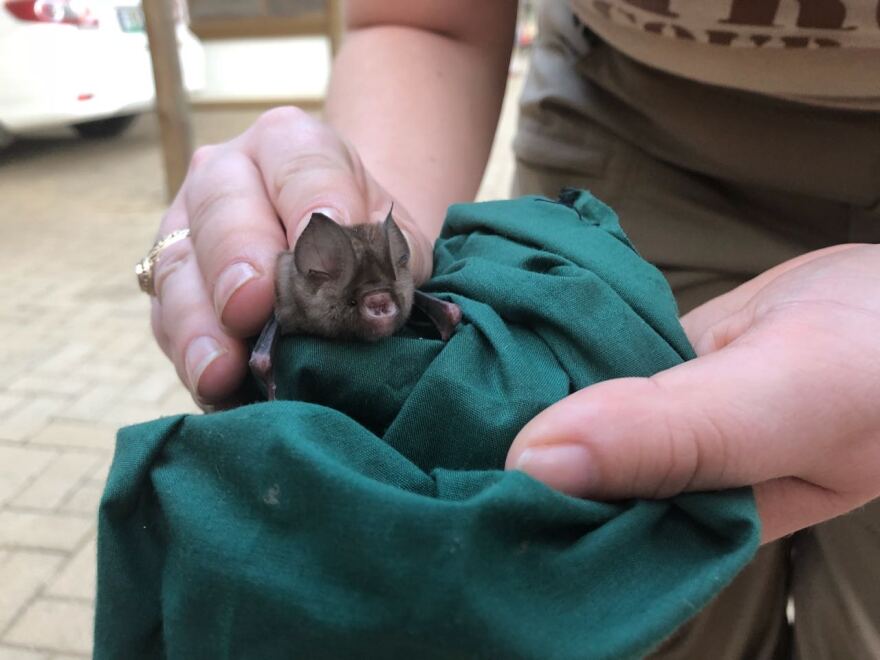Dan Parker: Bats form a really important component of many ecosystems all over the world, but they're actually a very highly understudied group of mammals.

Bats in broad terms, can be separated into two major groups. There are the much larger fruit bats, and these are bats that, as their name suggests, feed on fruit. And then the second group of bats, which we find pretty much all over the world too, are the insectivorous bats.
Ryan Helcoski: To put the bat diversity here into perspective, the entire state of Utah is home to about 18 species of bat, while Kruger, a single (though quite large) national park hosts upwards of 46 species, and possibly more.

Throughout most of the park, they’re a fairly common sight in the evenings. But that doesn’t mean they’re easy to study. Traditional methods can be challenging, but advances in acoustic monitoring have really opened up the field.
Parker: With the advent of acoustic sampling, we've been able to deploy acoustic bat detectors to many more sites than what was possible historically, and that's allowed us to begin to disentangle which species might be present, who's more active at particular times of the night and so on.

Helcoski: Essentially, an acoustic monitor records the sounds that bats make as they hunt, fly, and communicate. By deploying such monitors across Kruger, Parker and his team created a database of over 130,000 thousand acoustic bat records that reveal the linkage of bat communities to suitable habitats.
Parker: And this appears to be driven by, to a large extent, by the presence of very large water courses and river systems that connect different parts of tropical and sub-tropical Africa.
Helcoski: Many bats use the denser vegetation and taller trees that often grow along water sources as shelter for roosting and the water itself as an insect food source. But it’s difficult to generalize when it comes to bats. Since, unique among the mammals, they are capable of powered flight.
Parker: So we find that their activity is not hugely influenced by some of these environmental variables, like how the topography changes.

Helcoski: However, that mostly applies to the more generalist open-air foragers. Parker and his team also found that specialist bat species may be severely impacted by localized changes such as the loss of bushy trees that harbor the insects they eat.
This matters because although Kruger is a protected area, it is still influenced by global events like climate change and more localized shifts in animal and plant populations. And bats are often on the front lines of such changes as indicator species.
Parker: In other words, they are sort of the sentinels. So, they are the first ones to respond to major changes. And this can give us an early warning system, for want of a better term, of the change that is happening in the system. And we would then need to decide together with land managers whether this is a desirable or undesirable change.
Helcoski: Because managing a protected area isn’t easy. There’s a lot that land managers need to take into account. And bat community ecology is an important one at that. One that is essential for the functioning of many healthy ecosystems.
Note: In addition to the calls of colony of bats circling around Satara, you can also hear the slowed down sounds of some species searching for food at both the beginning and end of the episode. Bat calls were provided by Dan Parker.




